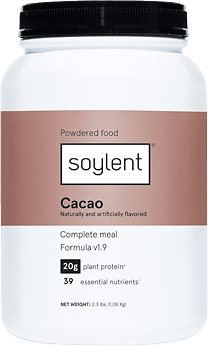Knowledge BaseYou're Questions Answered
Can you mix soy protein powder with milk?
Soy protein powder is a plant-based protein supplement derived from soybeans. It is a popular choice for vegetarians, vegans, and those with dietary restrictions. Mixing soy protein powder with milk, whether dairy or plant-based, can enhance the nutritional profile and taste of the protein shake. Below, we explore the benefits and considerations of mixing soy protein powder with milk.
Benefits of Mixing Soy Protein Powder with Milk
1. Increased Protein Content
Combining soy protein powder with milk can significantly increase the protein content of your shake. Dairy milk naturally contains about 8 grams of protein per cup, while soy protein powder typically provides around 20-25 grams of protein per serving. This combination is beneficial for individuals looking to boost their daily protein intake to support muscle growth and recovery1.
2. Enhanced Amino Acid Profile
While soy protein is a complete protein, containing all nine essential amino acids, mixing it with milk can further diversify the amino acid profile. This is especially useful when using plant-based milks, such as almond or soy milk, which may have a different amino acid composition compared to dairy milk2.
3. Improved Taste and Texture
Mixing soy protein powder with milk can improve the flavor and texture of the shake. Dairy milk, especially full-fat varieties, can add a creamy and rich texture, making the shake more palatable. Plant-based milks, like almond or oat milk, can also add subtle flavors that enhance the overall taste experience.
4. Additional Nutrients
Milk, whether dairy or plant-based, offers additional nutrients that complement the benefits of soy protein powder. Dairy milk provides calcium, vitamin D, and other essential nutrients, while plant-based milks often contain added vitamins and minerals, such as vitamin B12 and calcium, which are important for those following a vegan diet3.
Considerations
1. Choice of Milk
The choice of milk depends on dietary preferences and potential allergies. Dairy milk is a good option for those who consume animal products, while plant-based milks like almond, soy, or oat milk are suitable for those who are lactose intolerant or prefer non-dairy options. Each type of milk has its own nutritional profile and flavor, which can influence the final taste and nutritional content of the shake.
2. Sweeteners and Additives
Be mindful of the type of milk used, especially if it contains added sugars or flavorings. While these can enhance the taste, they may also increase the calorie and sugar content of the shake. Opting for unsweetened milk varieties can help control sugar intake and maintain a healthier shake.
3. Blending and Mixing
To achieve a smooth and well-blended shake, use a blender or shaker bottle. Gradually adding the soy protein powder to the milk while blending can help prevent clumping and ensure a consistent texture.
- Messina, M., & Messina, V. (2010). The role of soy in vegetarian diets. Nutrients, 2(8), 855-888.
- Hoffman, J. R., & Falvo, M. J. (2004). Protein–which is best? Journal of Sports Science & Medicine, 3(3), 118-130.
- Craig, W. J. (2009). Health effects of vegan diets. American Journal of Clinical Nutrition, 89(5), 1627S-1633S.
Related Questions
Protein vs Protein

Your Answer
We are a participant in the Amazon Services LLC Associates Program, an affiliate advertising program designed to provide a means for us to earn fees by linking to Amazon.com and affiliated sites.



